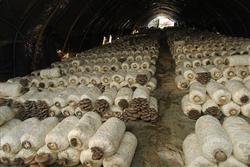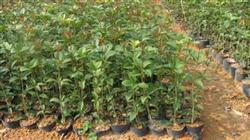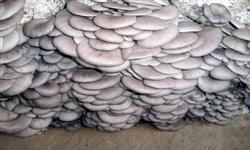High yield of Coprinus comatus cultivated in wave mode

Coprinus comatus has developed rapidly in the past two years because of its rich nutrition, delicious taste, high therapeutic value and good economic benefits. In order to explore the best cultivation mode of Coprinus comatus and produce higher economic benefits under the same production conditions, the scientific and technological personnel of the Edible Mushroom Association of Zhijiang City, Hubei Province, made some useful attempts. The experiment shows that the wave cultivation of Coprinus comatus has higher yield and higher benefit. The technical methods are briefly introduced as follows. The so-called wave cultivation mode, that is, when spreading and sowing, the culture material on the bed is designed as a kind of undulating peaks and troughs, similar to the waves on the water surface. The biggest advantage of this cultivation model lies in: first, it increases the surface area of mushroom on the bed surface, which is more than 50% more than that of the flat cultivation bed. The second is to effectively regulate and control the microclimate and environment in the bed and material. It is superior to the plane cultivation method in ventilating and supplying oxygen, removing harmful gases from the material and regulating the material temperature. Third, without any increase in investment, the output per unit area of cultivation can be increased by 30%, 40%, the bioconversion rate of raw materials is significantly increased, and the economic benefits are significantly increased. Operation and implementation methods: the production procedures such as ingredients in the early stage of production, fermentation, arrangement and disinfection of cultivation sites and management in the later stage of cultivation are the same as those of conventional cultivation methods. The difference lies in: first, the width of the box is designed to be 120 cm, which is helpful to improve the utilization rate of ordinary agricultural film. The second is to adopt layered sowing, that is, two layers of material and two layers of seed, to speed up the speed of bacteria transmission. Third, when spreading and sowing, longitudinally, three strips of material with a width of 30 cm each are laid at an equal distance on the side of the box, with a thickness of 10 cm, leaving two gaps of 15 cm wide in the middle. After the material surface is slightly flattened, sow the bacteria with a seed amount of 1 stroke 3, then spread a layer of 15 cm thick on the material surface, at the same time spread the material 3 cm thick in the reserved gap, and then arrange the material surface into a semicircle (tortoise back shape). Make it form a peak and trough, the height of the peak is 22 cm, and the bottom of the valley is 15 cm wide. Finally, sow the remaining 3 strains evenly all over the material surface, gently pat flat with wood, cover with film and straw curtain, keep warm and moisturizing, and manage the bacteria. After about 20 days, the mycelium in the material grew into half of the material or 2 beat 3, covering the soil after artificial improvement in time. When covering the soil, the thickness of the wave crest and trough should reach 5 cm. 15-18 days after the cover, a large number of mushrooms can be produced everywhere in the wave crest and trough. The experiment shows that when the thickness of Coprinus comatus covered with soil is about 5 cm, the mushroom is enlarged, the handle is thick and short, the umbrella opens late, the yield is high, the quality is good, the price is high and sells well.
- Prev

Cultivation techniques of Osmanthus fragrans seedlings and key points of Disease and Pest Control
Osmanthus fragrans generally use cuttings to raise seedlings, and single-stem sweet-scented osmanthus usually use sowing to raise seedlings. This is introduced as follows: 1. Osmanthus fragrans bloom from September to October, and the fruit will mature from late March to late April of the following year. When the fruit enters the ripening stage and the pericarp changes from green to purplish black gradually, it can be collected. The fruit collected.
- Next

Pleurotus ostreatus can be cultivated by two-stage mushroom production method.
Symptoms of Pleurotus ostreatus: the development and growth of the mushroom was slow, and particles or tumor-like protrusions appeared on the cover. When the disease is serious, the cap is stiff, the mushroom is hardened, and the mushroom body stops growing and developing. Prevention and treatment: select medium and low temperature varieties for cultivation, strengthen greenhouse heat preservation and warming measures, and control the temperature of mushroom production in greenhouse. Usually.
Related
- Fuxing push coffee new agricultural production and marketing class: lack of small-scale processing plants
- Jujube rice field leisure farm deep ploughing Yilan for five years to create a space for organic food and play
- Nongyu Farm-A trial of organic papaya for brave women with advanced technology
- Four points for attention in the prevention and control of diseases and insect pests of edible fungi
- How to add nutrient solution to Edible Fungi
- Is there any good way to control edible fungus mites?
- Open Inoculation Technology of Edible Fungi
- Is there any clever way to use fertilizer for edible fungus in winter?
- What agents are used to kill the pathogens of edible fungi in the mushroom shed?
- Rapid drying of Edible Fungi

